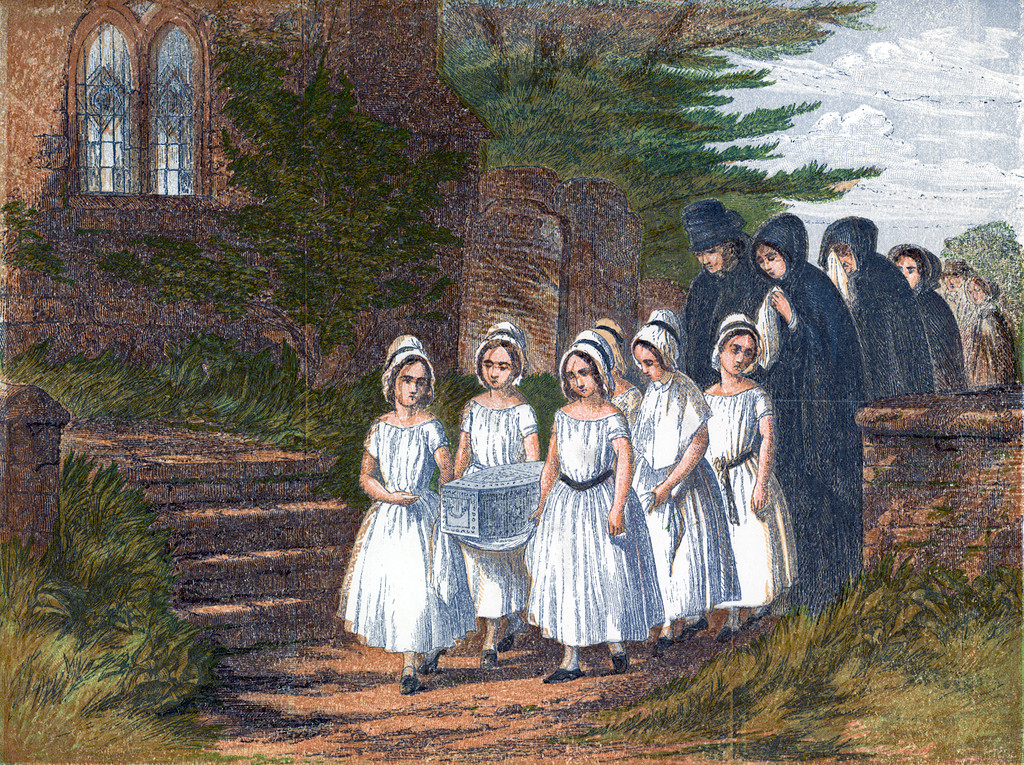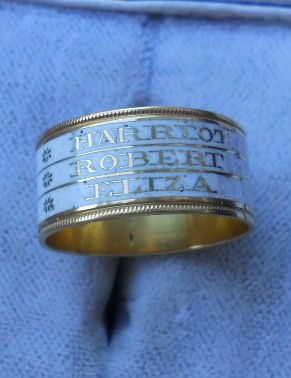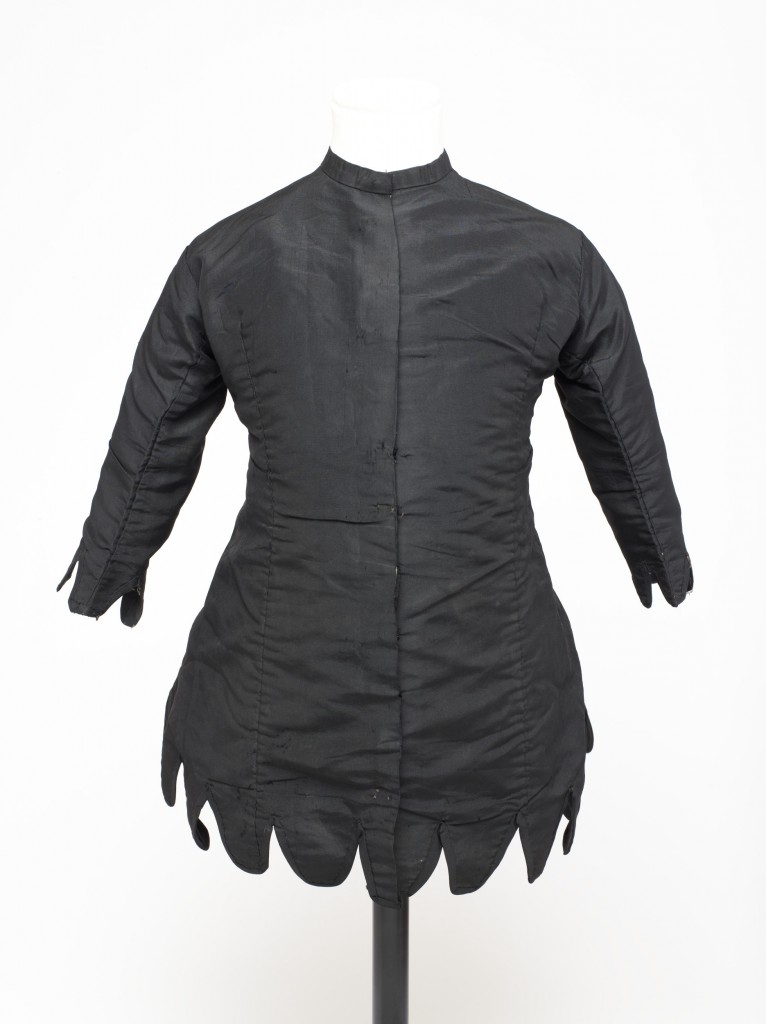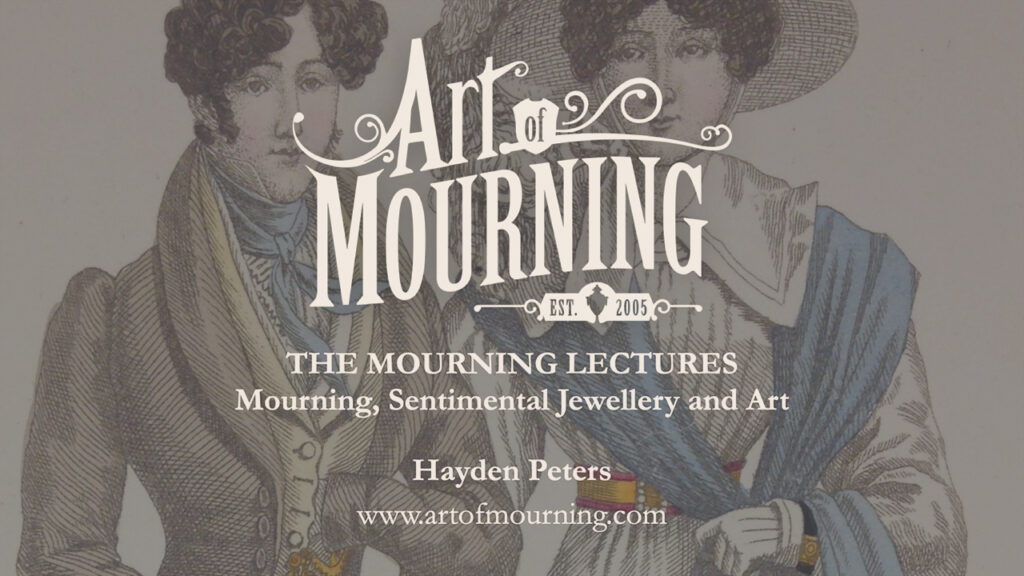Mourning Miniature for a Grieving Family
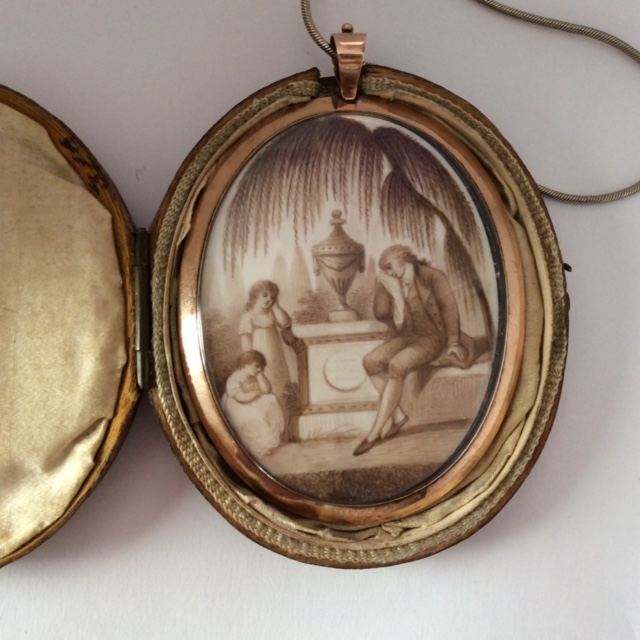
Death can be sudden and unplanned, while grief can last for an entire life. Mourning jewels, by their very nature, are required to capture a memory of a loved one that is all a person can have to hold onto the physical presence of another. As new classes gained access to wealth through merchant shipping and trade, education and focus on broadening skill sets allowed artisans to gain greater wealth through higher levels of spending. Goldsmiths and jewellers benefitted from new wealth and could explore areas in jewellery design that were not previously available outside the aristocracy. With these new levels of class through the 17th and 18th centuries, the industry of mourning and sentimentality began to offer more products to an audience that wished to be visible in society. Love and grief were not competitions, however, they were, and are, genuine outpourings of affection for a loved one, and the more wealthy could afford the more opulent jewel to display their love.

Jewels of the late 18th century were standardised, but arguably explored the most diverse designs in jewellery design of the modern period. This Greco-Roman revival period began when digs in Pompeii and Herculaneum provided classical discoveries in 1711, but resumed with major excavations in 1738, igniting the passion and interest in artists, thinkers and antiquarians. What stemmed from this was a change in how relationships were represented in jewellery. A major humanist movement in the Enlightenment was represented in Neoclassical jewels, which represented allegorical scenarios in concepts of life and society. As such, jewellery depictions of classical figures represented the modern self for the c.1760-c.1820 period.

The female became the allegorical mourner for loved ones. The female mourner was an ideal figure for mourning identification in the Neoclassical period. She, along with her virtue, carried the fashion of the Greco-Roman period, with the typical high waistline and lower cut bodices is trimmed in white, with long, narrow sleeve ending at white cuffs. The figure’s hair is often framed with a white veil that is pulled back to reveal her hair (rather than the normal veil framing the face). When considered that these pieces were shown in public and messages of popular thought that could be propagated by their image, adaptation of popular fashion through people identifying with these jewels was natural. In the same way that a modern audience views an advertisement, these jewels self-replicated by their popularity and translated into rapidly evolving fashion amongst the wealthy. Everyone wants to be contemporary and these jewels carried a message of what was.

In this miniature, a father mourns for his wife and two children mourn for their mother. The miniature retains its original compact carrying case, which was how many miniatures were taken and travelled with, not necessarily being worn around the neck. These were a precursor to the photograph, something which could be opened and looked down on to ignite a memory of a moment. Here, the moment is captured in an idyllic, yet realistic manner. The figures are not the allegorical ones of classical literature. These are figures that are painted to approximate the wearer’s likeness. This is a very unique and sentimental depiction, as there would not likely be another. Sepia and classical miniatures in colour were produced in high volume, then tailored to the specifications of the person who bought it. This way, travelling miniaturists could quickly amend a design to incorporate a chosen dedication or an element into the image. These can often be spotted in the sepia paint being different colours, unless a modern seller has repainted the scenario. It was an exceptionally popular method during the Napoleonic Wars, where soldiers could have their features painted into a miniature, while the uniform design was pre-painted. The Neoclassical ideal of beauty, with the almond-shaped eyes and classical features, made it easier for the miniaturist to paint and deliver something that could be set into a jewel.
A design of this distinction is in a class of its own. There is special attention paid to the father in this jewel, as he sits, cross-legged, with his head buried into a handkerchief, prostrate at the urn of his departed loved one. He is dressed in contemporary fashion, wearing a white cravat and pantaloons, with a dark coat, waistcoat and breeches, which correlate to mourning fashion in men during the late 18th century. This matches the cut of daily clothes, as gentleman did not need to go to the extremes of women outside of court. In all, this is a very personal sentiment and the gentleman was clearly in a good level of society for the mid 1790s to be able to depict himself in such a fashion on a piece. This speaks to the wealth of the miniature and how it would have been painted after the death of the person they are grieving for. It is as much as a piece designed in a sitting, as to one that was made spontaneously.
In the two daughters, we see how the child was depicted in mourning for the time.
Children were part of the mourning ritual in the same manner as adults. From the perspective of costume, children were required to follow the stages of mourning and wear the appropriate garments and also attend funerals. For twelve months, children were required to mourn a parent, with the first six months in dull black or crepe to show deepest mourning. For the following three months of this period, the Ordinary mourning phase meant that they could wear black silk without crepe. For the final three months, children were allowed to wear half mourning colours. In General Court mourning periods, children wore mourning according to the mandated requirements, as well as for all relatives.
‘The Tolling Bell’, a hymn published by S.P.C.K in the 1840s, has an illustration of six girls carrying the coffin of an infant to the grave site. The girls are wearing white to denote the innocence and purity of the child in the same manner as white enamel would be used in a mourning ring:
The black ribbons that the girls are wearing denote grief, as would black enamel in a jewel. The proximity of children to mortality previous to the mid 20th century was far closer to the fact. Death was a part of life, rather than being disconnected through funeral practitioners who handle the body after death. Funerals began with the home, often with the body lying in state, forcing children to deal with the reality of death and practice the art of mourning.
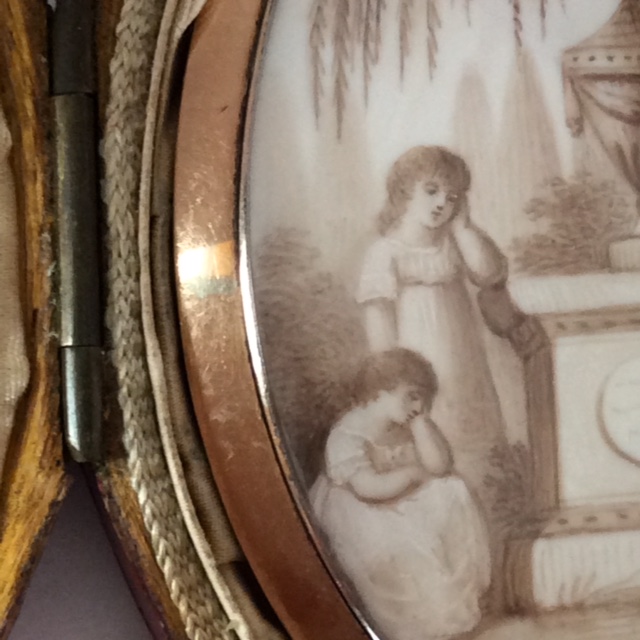
It was until the 1760s that children wore mourning clothes that were identical to that of adults. The 1760s saw a change in cultural identity through the Neoclassical era, which resulted in diversity of fashion as Western society connected itself back to Greco-Roman identity through the Enlightenment. Historical discovery in Herculaneum and Pompeii in 1711 led to even further cultural connection to the classical world, with further excavations resuming in 1738, igniting the passion and interest in artists, thinkers and antiquarians and spurring forward a new perspective of the individual and identity within the Western religious paradigm. From the Neoclassical period of art and fashion, jewels evolved to depict the individual and move away from the identity of death. The 19th century tried to pull this back to its traditional roots, but this created a schism between personal and religious thought.
Leading to this period, children’s mourning mirrored that of adults. Sir David Owen’s will of 1529 stated ‘To make gownes and hodes after the maner and facon of mourners’, which holistically covers both adults and children with uniform mourning costume. To be even more specific, he stated that ‘I wille that everyone of my children have gownes and hodes of black clothe’. This is an early-modern example of how mourning was represented in society. Hoods and gowns of black cloth are established in the modern mind as the identity of mourning, relevant enough for everyone to participate in and wear.
In the 17th century, the covering of black crepe was typical in mourning to promote a specific shape and identity of mourning. In the German funeral of George II, Landgrave of Hesse, young boys in the procession wore tall crowned hats with long falls and full length cloaks in the same manner as their adult relatives. The investment in good quality crepe continued through the 17th and mid 18th centuries, causing an elitist view of mourning within society. 17d (pence) a yard of crepe in 1685 was the cost and this was high expenditure for the amount required in the costume.
Though it was the Neoclassical period which saw a change in mourning costume from the equality is costume that parents and children shared. As stated, the 1760s saw a massive change through the Enlightenment towards a humanist movement that focused away from the ecclesiastical, or faith-based, views on mortality, and put the responsibility of living upon the family and the individual. During this post-1760 period, girls would wear plain silk or muslin dresses with wide sashes. Boys wore ‘skeleton’ suits with soft falling frilled collars. Under the age of six, white dresses were acceptable for boys and girls, even under deepest mourning. As the formality around female dress declined, children’s dress would follow several years later (often ten years). This was a reaction from the mother to child and, in the 1770s period, part of personal liberalisation.
Throughout the 19th century, black was still the standard of mourning, particularly for children over six, and highly required for girls. Boys would have worn white dresses trimmed with black until the age of breeching (four to six). Breeching was when a small boy wore dresses before wearing breeches or trousers and was considered more of a rite of passage, rather than an eventuality.
As children grew, there was a solid business for the creation of mourning costume, as the children outgrew what they wore. Even from the 17th century, a mourning gown could cost upwards of £5, which is an incredible sum for the child in mourning. Dying dresses was acceptable, particularly during the 19th century, making an affordable way to denote mourning in society.
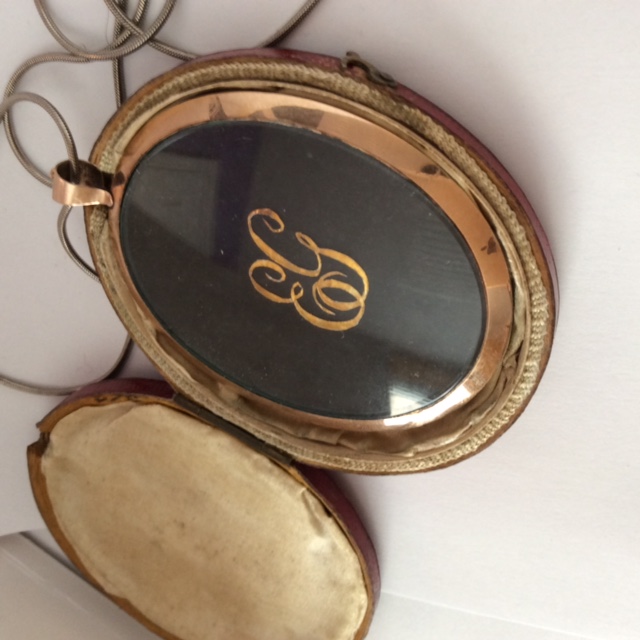
It is the size of the miniature that is important to reflect upon when viewing this piece. The turn of the 19th century saw easier access to miniature portraits, and the first quarter of the 19th century promoted greater investment in the arts and the growth of the British schools. Miniaturists could produce pieces like this for those that could afford them, a precursor to photography, in that people could have their images captured and kept. The large size of the miniature and its compact case was for transport and reflection. One could take this with them and look down upon it to remember, just as one would a photograph. Its large size was not necessarily for wearing, but a keepsake for the family. During times where there was a new height to global transport and international journeys for war or economics, the need to carry something of a loved one far was more and more popular. This miniature not only transcends distance, but the death itself, bringing the family closer together, as they are depicted in their unified grief.




